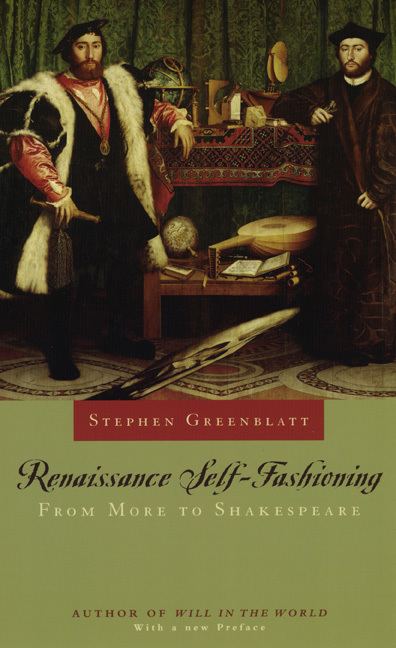 | ||
Self-fashioning, a term introduced by Stephen Greenblatt (Renaissance Self-Fashioning, 1980), is used to describe the process of constructing one's identity and public persona according to a set of socially acceptable standards. Greenblatt described the process in the Renaissance era where a noble man was instructed to dress in the finest clothing he could afford, to be well versed and educated in art, literature, sports, and other culturally determined noble exercises, and to generally compose himself in a carefully intended manner. Additionally, the relationship between self-fashioning and the aesthetic mediums was a reciprocal one. Just as the art of creating oneself was highly influenced by the art and literature of the time, such as conduct books and religious iconography, such a concern for one's outwardly projected image was reflected in the portraiture of the time.
According to Greenblatt, during the Renaissance the upper class practiced self-fashioning. Prescribed attire and behavior was created for the noblemen and women, and were represented through portraits. The ideological traits portraying masculinity were symbols of authority and power. Male rulers depicted themselves in armor or with weapons. The most important characteristic attributed to women was beauty. Beauty represents the concepts of purity, virtue and modesty. In portraits, women performed these traits through idealized features, fancy dresses, and elaborate jewelry. The iconography of portraits displays the gender-specific qualities prescribed during the Renaissance through visual devices.
The Book of the Courtier, by Baldassare Castiglione, is one of the first texts that depicted behaviors which individuals were expected to adopt in society. As an informal book of conduct, The Courtier included instructions on how people of the noble class were to dress and speak, as well as general rules of interaction to follow in social situations. In his article "The Semiotics of Masculinity in Renaissance England", David Kuchta discusses the role of The Courtier concerning its influence on the self-fashioning of Renaissance England. Men of the noble class were to "create" themselves as works of art, according to the conventions of dress and manner as set forth by the monarchs. Characteristics of this Renaissance self-fashioning involve the use of "feminine" aspects of dress and conduct. A man was to conduct and dress in a way that reflected his position in society. He was not supposed to act in an affected manner, but present naturalness and nonchalance, or sprezzatura. In addition to, The Courtier puts emphasis on the importance of not only trying to resemble one's master, but actually trying to transform himself into his master in a way that exercises sprezzatura. This presents a key theme in self-fashioning: the conscious effort to strive to imitate a praised model in society.
For women, one of the most popular figures to imitate was the Virgin Mary. Margaret R. Miles provides a thorough analysis of this influence-through-images of iconography and art in her article "The Virgin's One Bare Breast". The bare breast symbolized nourishment in a time of famine. Depicting the Virgin Mary nursing the infant Christ encouraged women to aspire to provide the same nourishment for their own families and community. Miles goes on to explain that, although women were encouraged to strive to emulate the many virtues of the Virgin, they must also be aware that one could never fully achieve such a standard. Similarly, men were taught that they should follow in the image of Christ, which was believed to be more attainable.
Greenblatt's theories are influenced by the French sociologist and historian Michel Foucault.
Self-fashioning has implications and applications outside of Renaissance texts. Waleska Schwandt applies the theory to Oscar Wilde in a chapter of the book The Importance of Reinventing Oscar: Versions of Wilde during the Last 100 Years, edited by Uwe Boker et al. (New York and Amsterdam: Rodopi, 2002). Alvina E. Quintana uses the theory to analyse twentieth century Chicano literature (see "Ana Castillo's The Mixquiahuala Leters", in Criticism in the Borderlands: Studies in Chicano Literature, Culture and Ideology, Hector Calderon and Jose David Saldivar (eds), Durham, NC: Duke University Press, 1991, pp. 72–83).
